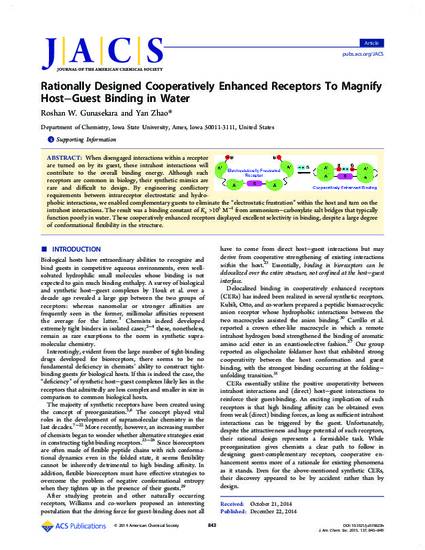
When disengaged interactions within a receptor are turned on by its guest, these intrahost interactions will contribute to the overall binding energy. Although such receptors are common in biology, their synthetic mimics are rare and difficult to design. By engineering conflictory requirements between intrareceptor electrostatic and hydrophobic interactions, we enabled complementary guests to eliminate the “electrostatic frustration” within the host and turn on the intrahost interactions. The result was a binding constant of Ka >105 M–1 from ammonium–carboxylate salt bridges that typically function poorly in water. These cooperatively enhanced receptors displayed excellent selectivity in binding, despite a large degree of conformational flexibility in the structure.
Available at: http://works.bepress.com/yan_zhao/22/

Reprinted (adapted) with permission from Journal of the American Chemical Society 137 (2015): 843, doi:10.1021/ja510823h. Copyright 2015 American Chemical Society.